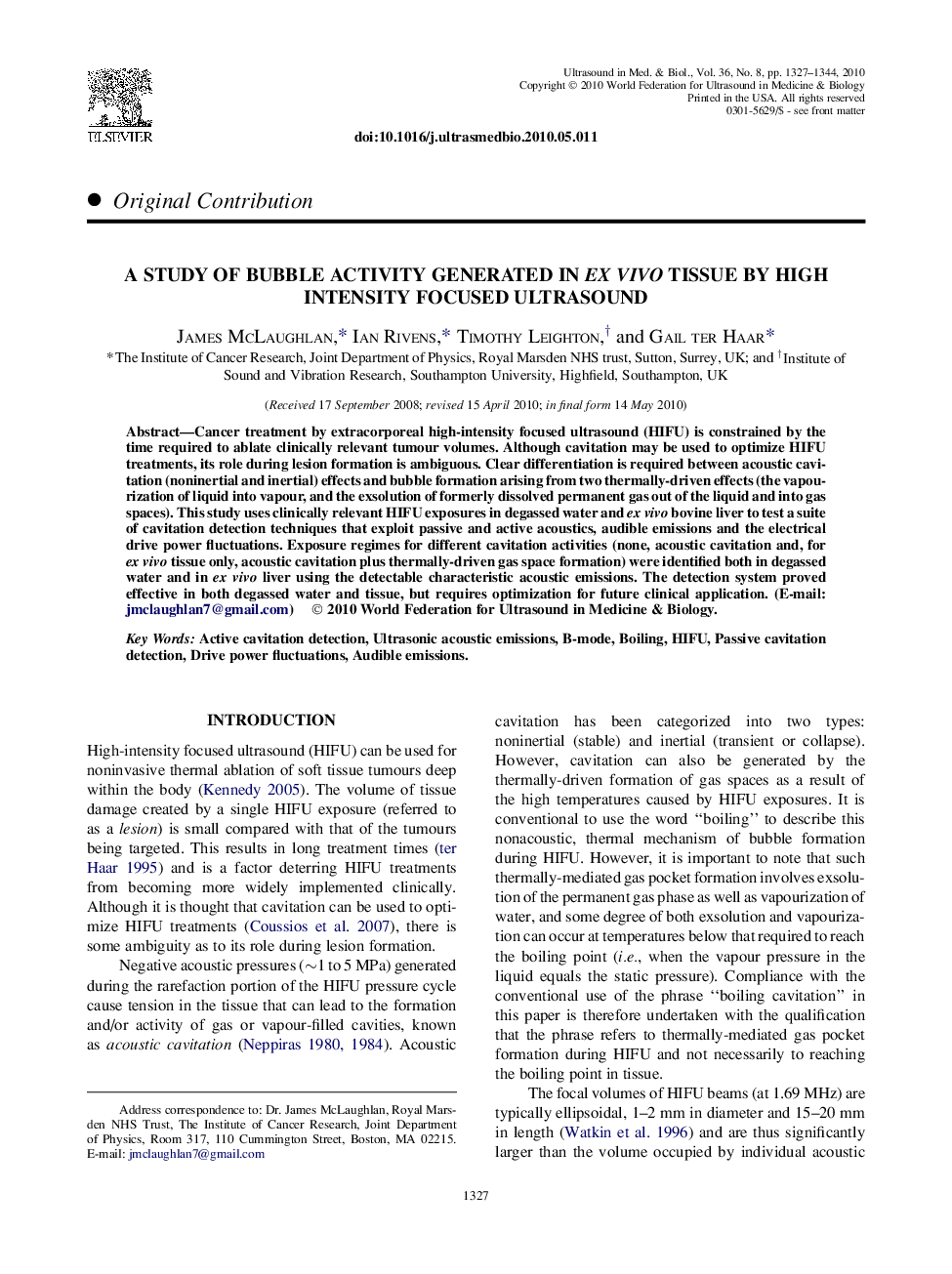| Article ID | Journal | Published Year | Pages | File Type |
|---|---|---|---|---|
| 1761655 | Ultrasound in Medicine & Biology | 2010 | 18 Pages |
Abstract
Cancer treatment by extracorporeal high-intensity focused ultrasound (HIFU) is constrained by the time required to ablate clinically relevant tumour volumes. Although cavitation may be used to optimize HIFU treatments, its role during lesion formation is ambiguous. Clear differentiation is required between acoustic cavitation (noninertial and inertial) effects and bubble formation arising from two thermally-driven effects (the vapourization of liquid into vapour, and the exsolution of formerly dissolved permanent gas out of the liquid and into gas spaces). This study uses clinically relevant HIFU exposures in degassed water and ex vivo bovine liver to test a suite of cavitation detection techniques that exploit passive and active acoustics, audible emissions and the electrical drive power fluctuations. Exposure regimes for different cavitation activities (none, acoustic cavitation and, for ex vivo tissue only, acoustic cavitation plus thermally-driven gas space formation) were identified both in degassed water and in ex vivo liver using the detectable characteristic acoustic emissions. The detection system proved effective in both degassed water and tissue, but requires optimization for future clinical application. (E-mail: jmclaughlan7@gmail.com)
Related Topics
Physical Sciences and Engineering
Physics and Astronomy
Acoustics and Ultrasonics
Authors
James McLaughlan, Ian Rivens, Timothy Leighton, Gail ter Haar,
